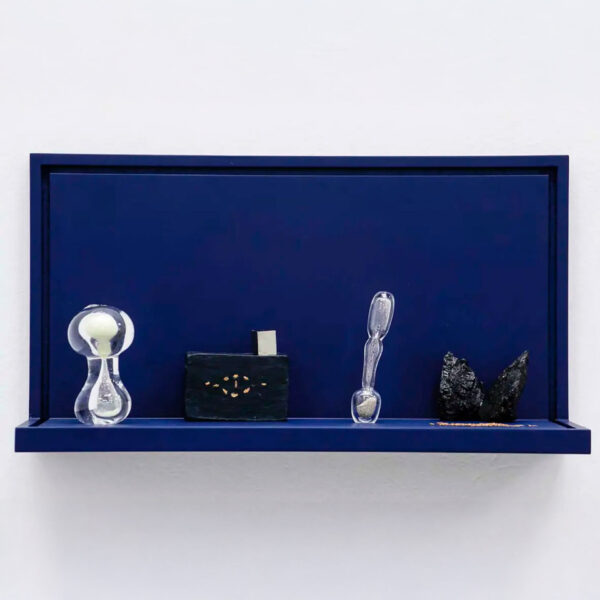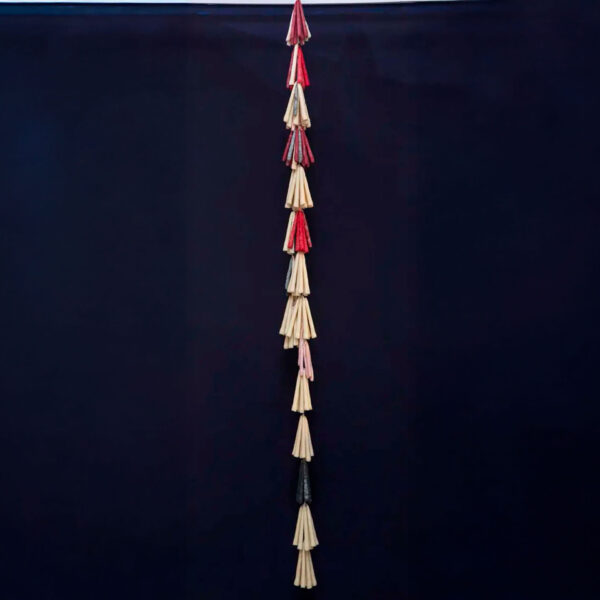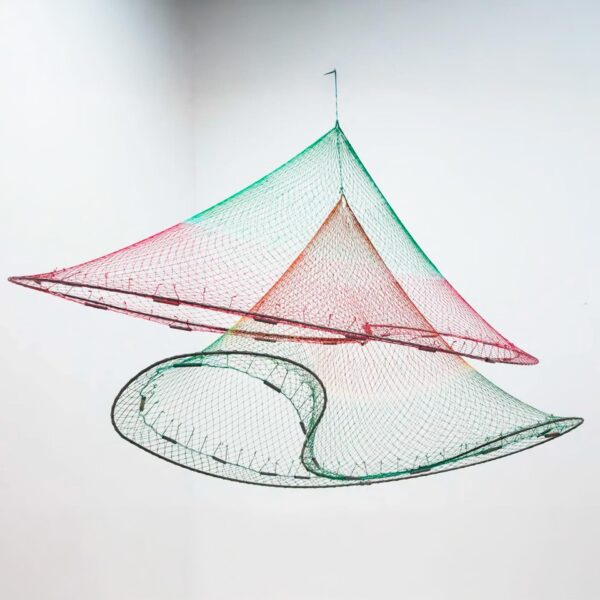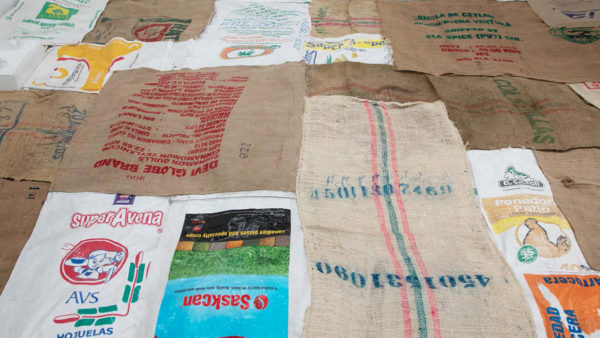




El árbol de la vida y la abundancia
The exhibition presents the work of four artists who explore the relationship between water and culture. The drawing “The Tree of Life and Abundance” by Don Abel Rodríguez represents the founding myth of the Nonuya people and shows how human constructions respond to culture and symbolic fabric. Carolina Caycedo presents sacks as documents that trace the tension between the countryside and the city. Tania Candiani explores language in her video with 40 ways to name the aquatic dimension in native Mexican languages. The gaze is an essential part of the exhibition, with attentive and present objects, evoking the conscious presence of water and its relationship with nature.
The Tree of Life and Abundance, drawing by Don Abel Rodríguez representing the founding myth of the Nonuya people, can be understood as an architectural plan that allows us to understand the poetic space of the existence of his nation. Every human construction responds to the needs of a particular time, place and culture and allows the manifestation of the symbolic fabric of every subject that inhabits it. To this extent, the Tree of Life and Abundance illustrates the instructions expressed in the myth. Instructions that allow man not only to co-habit with other humans, but with the entire natural world. Through the years and collaborative work, Don Abel has transmitted his knowledge to his son Wilson, who participates in this exhibition demonstrating
this generous process of surrender and nutrition.
In Carolina Caycedo’s work, Water appears as a metaphysical entity whose material manifestation is fundamental to the existence of all beings. Water systems are complex universes governed by their own rules that generate particular cultures and societies. In most allegories of Native American cultures, water expresses the feminine power that looks after everything and that acquires healing qualities. If these water systems are altered, the consequences appear in all physical and spiritual dimensions. In Colombia, for example, large population displacements are related to the construction of hydroelectric dams. In the work Everything that enters, everything that comes out, the sacks become a document that allows to track the tension between the rural and the
industrial, the fruits that the land gives and the products they become. From this palimpsest created with a plot of sacks, Carolina proposes a simultaneous and timeless reading of the reality of the countryside and its relationship with the city.
The glass clocks refer to the urgency of rectifying the behavior of contemporary subjects in relation to water and other resources. Instead of sand, these objects that could also be understood as amulets, contain metals and chemicals that are used in industrial fishing and in the extraction of precious metals such as gold and silver.
Language is one of the transversal interest in the work of Tania Candiani. In this case, this concern is manifested in the video in which 40 ways of naming the aquatic dimension in Mexican native languages are heard. Within Candiani’s work, Pre-Hispanic history participates strategically to create connections between the poetic world and the idea of modernity, understood as an organizing tactic rather than as a historical model.
Ancestral thinking, modernity, progress, myth are some of the concepts that this exhibition intends to explore while proposing a model in which the universe is understood as a continuous movement between polarities.
The gaze is an essential part of this exhibition, in which the objects are present and attentive. From the bottom of the rive evokes the presence of a river that is aware of its activity and of the existence of others who inhabit and use it. They are the eyes of nature that are pending and alert. In these times when balance is so fragile, natural entities are reacting and causing a change in the paradigms of how to nest in this world.
Geometries of resistance are inspired by the body paint used by the original inhabitants of the Americas and that have lately become more visible due to the actions of the guardians of the sacred territories, such as the Amazon rainforest. These cosmetic and cosmic paintings are also being used by activists who must protect their identity from the facial recognition cameras used by totalitarian states.
The works of Carolina, Tania, Abel and Wilson participate in a ritual that reveals the urgency to awaken, through an allegorical celebration, forces and consciences that activate the relationship of people with the natural world and with their own nature. . The myth, thanksgiving, cleansing, fishing, dancing, are actions that enshrine the eternal return of time and highlight the magical thinking that keeps all the elements in harmony. And this harmony is the solution to the systematic crisis that challenges us.
Bogotá
Carrera 23 # 76-74
Barrio San Felipe, Bogotá
Tel. +57 (60) 1 3226703
Lunes a Viernes
10:00 am a 05:30 pm


















